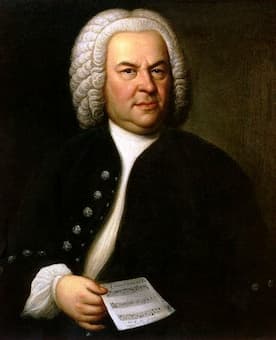
Johann Sebastian Bach
On 21 March, I always celebrate the birthday of Johann Sebastian Bach by listening to as many of his compositions as possible. Basically, it’s Seb overdose for an entire day, and I simply can’t get enough. As you might have noticed already, I personally consider J. S. Bach the greatest composer in the history of Western music. He composed some of the most beautiful, spiritual, and awe-inspiring music on the planet, and his distinctive and extraordinarily varied musical expressions will continue to provide a lasting testament to human originality and creativity. My only problem is trying to figure out what music to share with you today; Bach is infinite. He was part of an extensive Saxon-Thuringian family that produced an unparalleled and almost incalculable number of musicians. From fiddlers and town musicians to organists, from Cantors, court musicians and Kapellmeisters, members of the Bach family extensively populated the musical landscape from the 16th to the 19th century. Johann Sebastian’s father Johann Ambrosius Bach (1645-1695) was born in Erfurt, and subsequently employed as a violinist. He married his first wife Maria Elisabeth Lämmerhirt on 1 April 1668, and moved his growing family to Eisenach in 1671. Once arrived, he was employed as a court trumpeter and director of the town musicians.
Johann Sebastian Bach: Cantata BWV 140, “Wachet auf, ruft uns die Stimme”
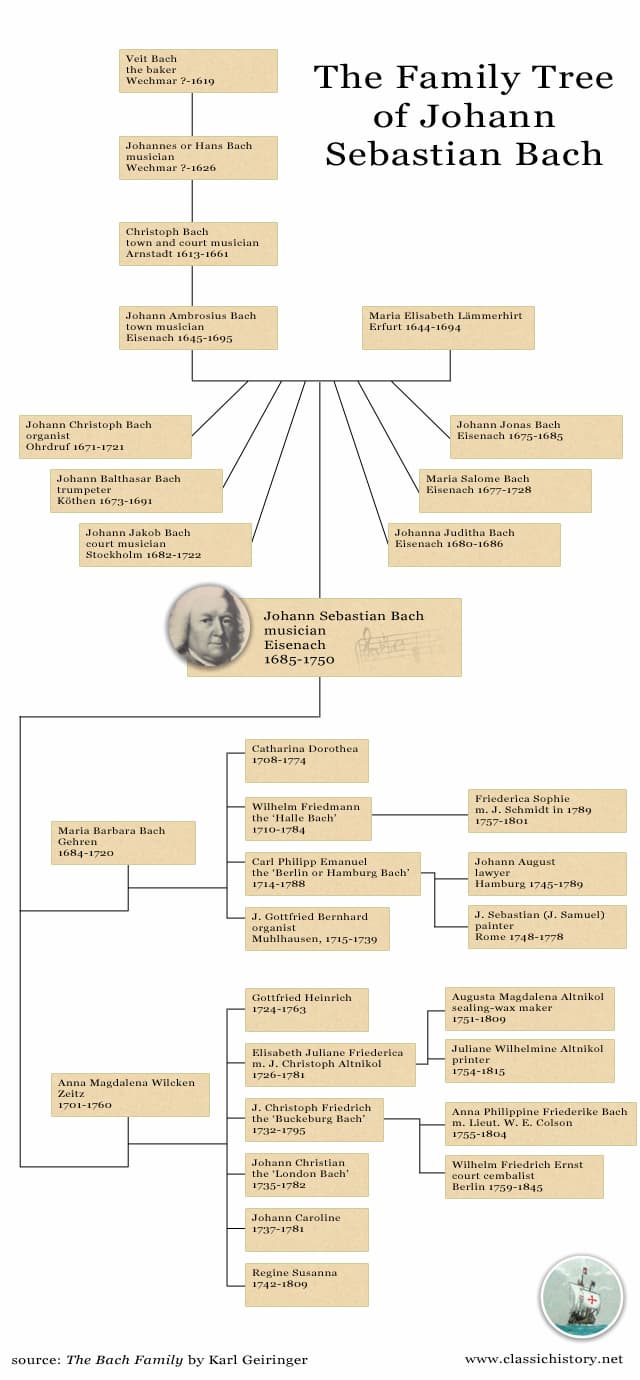
Bach’s family tree
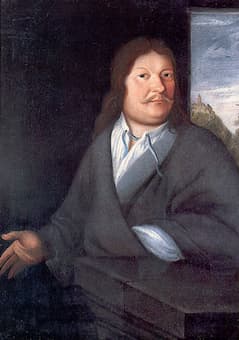
Johann Ambrosius Bach
Johann Sebastian’s mother Maria Elisabeth Lämmerhirt (1644–94) was the daughter of a furrier and town councillor in Erfurt. Her sister became the mother of Bach’s cousin J.G. Walther, and her half-sister Hedwig Lämmerhirt was the second wife of Ambrosius Bach’s uncle Johann Bach, who was organist at the Predigerkirche in Erfurt. Johann Sebastian was the last of their eight children to be born, and his birthday on 21 March 1685 was “carefully recorded by Sebastian in the family genealogy.” His birthdate is supported by the date of baptism on 23 March in the register of St Georg Church. His godfathers were Johann Georg Koch, a forestry official, and Sebastian Nagel, a Gotha Stadtpfeifer. The house currently established as the Bach Museum and called the “Bachhaus” in Eisenach would not actually have been his birthplace, but it is definitely worth a visit. Young Sebastian entered the Eisenach school system, and he seems to have been frequently absent, perhaps owing to illness. It has been assumed that his father taught him the rudiments of string playing, and he “is said to have been an unusually good treble, singing under Canto Dedekind at St Georg Church.
Johann Sebastian Bach: Piano Partita No. 2 in C minor, BWV 826
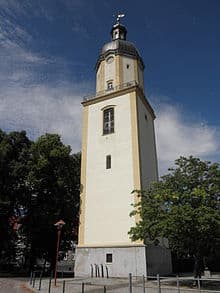
St. Michael’s Church, Ohrdruf
Johann Sebastian’s mother Elisabeth Bach was buried on 3 May 1694, and on 27 November of that year, Ambrosius married Barbara Margaretha, née Keul. She was the daughter of a former mayor of Arnstadt, and at the age of 35 had already been twice widowed. Sadly, barely three months after his second marriage, Ambrosius Bach died after a long and serious illness on 20 February 1695. Losing both parents before the age of ten, Johann Sebastian and his brother Jacob were sent to live with their oldest brother Johann Christoph, organist at Ohrdruf. Johann Sebastian stayed in Ohrdruf for five years, receiving exceptionally enlightened schooling in “religion, reading, writing, arithmetic, singing, history and natural science.”
Johann Sebastian Bach: Fantasia and Fugue in G minor, BWV 542
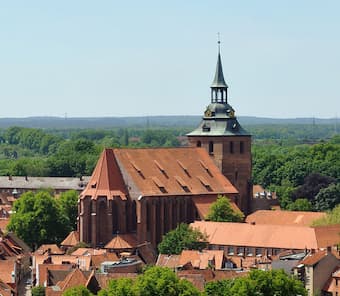
Michaeliskirche in Lüneburg
Johann Sebastian’s musical education is still a matter of conjecture, but he probably received his first keyboard lessons from Christoph. Johann Sebastian certainly was exposed to a number of scores his brother used in services at St. Michael’s Church, and it is assumed that “Sebastian taught himself composition by copying.” Still, we don’t know exactly when Sebastian started to compose, but it seems reasonable to suppose that he did so while living in Ohrdruf. “The earliest organ chorales in the Neumeister manuscript, as well as such works as BWV 749, 750 and 756, provide plausible examples of pieces composed before and around 1700. They are characterized by sound craftsmanship, observance of models provided by Pachelbel, and a sense of attempting to break away from musical conventions to find independent answers.”
Johann Sebastian Bach: “Herr Jesu Christ, meins Lebens Licht,” BWV 750
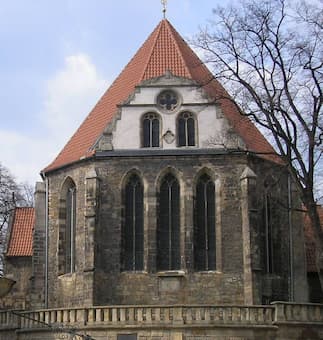
Bach Church, Arnstadt
We are not sure what prompted Johann Christoph to order Johann Sebastian out of the house. We do know, however, that together with his best friend Georg Erdmann, Sebastian decided to walk to the town of Lüneburg, a distance of almost 400 miles. With a letter of recommendation in his pocket, Sebastian joined the choir of the wealthy Michaelis monastery, which provided free places for poor boys with musical talent. And by 3 April 1700 Sebastian sang at the Michaeliskirche for Holy Week and Easter. Members of the choir received free schooling at the Michaelis School, a small stipend, and a share in fees for weddings and other occasions. “At school, Bach’s studies embraced orthodox Lutheranism, logic, rhetoric, Latin and Greek, arithmetic, history, geography and German poetry.” In musical matters he was drawn to the organist Georg Böhm (1661-17330), who was organist at the Joahnniskirche in Lüneburg.
Johann Sebastian Bach: Brandenburg Concerto No. 1 in F Major, BWV 1046
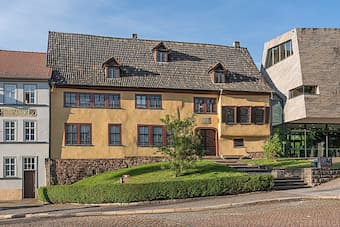
Bach House (Eisenach)
It has been argued that “the organist of the Johanniskirche would not have been accessible to a scholar of the Michaelisschule, since the two choirs were not on good terms, and that Bach’s knowledge of Böhm’s music must have come later.” They nevertheless seemed to have been on good terms, and after graduating from St. Michael’s and being turned down for the post of organist at Sangerhausen, Sebastian was appointed court musician in the chapel of Duke Johann Ernst III in Weimar. During his seven-month tenure in Weimar, his reputation as a keyboardist was spreading far and wide, and on 14 August 1703 Johann became the organist at the New Church in Arnstadt, with a “relatively generous salary, and a new organ tuned in a temperament that allowed music written in a wider range of keys to be played.”
For more of the best in classical music, sign up to our E-Newsletter
Johann Sebastian Bach: Goldberg Variations BWV 988
